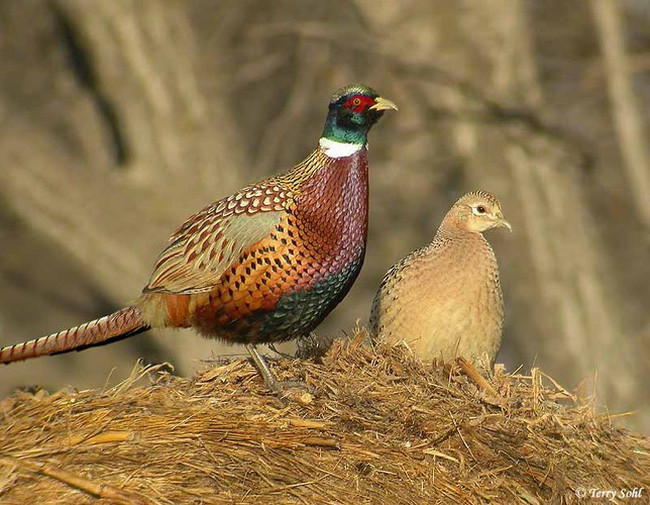Currently, there are about 1,556 species of wild animals in the world that are identified as endangered and near-extinct and need urgent protection. In tropical forests, the shelter of more than half of the creatures currently existing on earth is also shrinking, causing many species of countless wild animals to disappear because their habitats are destroyed. Protecting wild animals in nature is a very necessary issue.
- Be animal friendly travelers
The first thing people should do is avoid cruel and exploitative activities like riding elephants and camels when traveling. Elephant rides, safaris and interactions with wild animals are promoted to tourists in South Africa and across Asia, especially in India and Thailand. Elephants are often taken from the wild when they are young and cruelly trained to be ridden. Similarly, camels are forced to give endless rides to tourists in Egypt. These animals perform regular tourist duties without rest, shade or water. They rarely receive veterinary treatment for injuries, can be chained for hours and are subjected to cruel training methods such as whips and sticks. Conservationists recommend that instead of riding animals, tourists have other interesting alternatives such as renting bicycles or taking nature walks.

2. Do not exploit wildlife for entertainment purposes.
Conservationists discourage the exploitation of wildlife for entertainment purposes. For example, the natural habitats of whales and dolphins cannot be replicated in captivity, and the service of swimming with dolphins has increased the demand for these species . Today, dolphins can still be found in aquariums in countries such as the US, Japan, China, the UAE, and many European countries such as Greece and the Netherlands.
Poor quality zoos can also be a nightmare for animals. Keeping wild species in captivity in inadequate conditions that do not meet their complex physical and psychological needs and do not provide them with proper care. Sadly, these can be found all over the world. It is much better for humans to see animals in the wild, observing their natural behaviour without disturbing them.
3. Do not buy products derived from rare and endangered wildlife.
Buying souvenirs made from wildlife parts like turtle shells, fur, or ivory means that the animal has suffered inhumane treatment because of your demand for trinkets. And you may be unwittingly supporting poaching and wildlife trafficking. Instead, support your local community by purchasing a wildlife-free painting, carving, or craft from a local artist.

4. Say no to taking photos with wildlife
Never pay to have your photo taken with wild animals such as parrots, monkeys or wild cats such as tigers at temples. These animals are often “stolen” from the wild and drugged. They may also be beaten and have their teeth or claws “plucked out”. In South Africa, thousands of lions are bred in captivity and taken from their mothers at a young age to be used as “photo props” for tourists. When the cubs are a little older, they are used for “walking with lions” tourism experiences, and eventually sold to be shot in trophy hunting operations, or trafficked for lion bones.
5. Refuse wild animal meat
The capture and consumption of wildlife such as bats, primates and rats fuels a vast global trade that not only causes enormous suffering to hundreds of thousands of animals each year and “incentivizes” the exploitation of endangered species to their extinction, but also poses serious risks to human health.
6. Do not wear or use products made from fur.
Millions of foxes, minks, raccoon dogs and coyotes die every year for fashion. They are kept in tiny wire cages on farms, or caught painfully in metal traps. Their fur is turned into frivolous ornaments on coats, hats and accessories. These horrific practices can cause psychological disorders in the animals, forcing them to constantly molt and even shed their fur through human shearing.
Fur is also a polluter, as the processing and tanning of leather involves the use of toxic chemicals such as formaldehyde, cyanide, lead and chromium, which end up in waterways and destroy wildlife. Conservationists hope this will inspire compassion among fashion consumers. Choose alternatives and let animals keep their fur.
7. Be kind to pests too
Wildlife such as voles and mice are often subjected to cruel methods of extermination such as slow poisoning or glue traps. Glue traps immobilize but do not kill the animals trapped. Small animals can starve to death or die from their injuries over the course of hours. Sometimes, in a desperate attempt to escape the trap, they rip off or cut off their own limbs. Using poisons can not only cause voles and mice to die painfully, but also pose a threat to other wildlife and pets that come into contact with the poisoned animals.
It is better to think of rats as wildlife that live alongside humans, but sometimes in unwanted places. Conservationists advocate the use of non-lethal methods of deterrence, repellent, and prevention of rat populations. This includes blocking access points to homes, removing food sources, using friendly deterrents such as rat netting, and as a last resort, relocating individuals using live traps.
Let’s change each individual’s mindset and actions to contribute to maintaining invaluable values for our future generations.